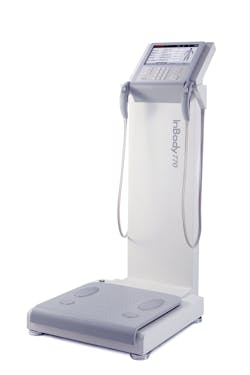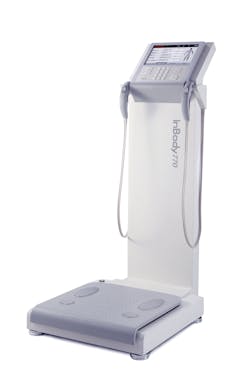InBody 770 Analyzes Internal Health Via Bioelectrical Impedance
Put your feet here. Hold this. Ok, your total body water is at 28 liters, that’s good. Your visceral fat is lower than your last checkup. Muscle mass, wow, you’ve been doing your exercises, haven’t you? These and other snippets of conversation will likely be heard in a typical setting for the InBody 770. With more than 15 outputs, including skeletal muscle mass and basal metabolic rate, it could revolutionize physical evaluations in the doctor’s office.
InBody 770 uses 8-Point tactile electrodes with a patented thumb electrode to allow alternating current to flow through the body, measuring impedance levels in the arms, legs, and trunk. Different frequency levels are used to measure factors ranging from water content to muscle mass and fat. A generated result sheet can be seen here.
For example, frequencies around 50 kHz and lower are effective for measuring extracellular body water, while frequencies ranging from about 100 kHz pass through cell membranes more easily and are designed to measure total body water.
While other Bioelectrical Impedance analysis (BIA) machines employ empirical estimations, InBody 770 directly uses impedance results to measure the body’s internal content. Its searchable database stores up to 100,000 entries. Other features include an LCD touchscreen with voice guidance, and simplified data transfer with a USB device. A winner of the iF Design Award in March 2015, InBody 770 will target hospitals, professional sports teams, and universities in particular, as well as be used for research projects.
About the Author
Leah Scully
Associate Content Producer
Leah Scully is a graduate of The College of New Jersey. She has a BS degree in Biomedical Engineering with a mechanical specialization. Leah is responsible for Machine Design’s news items that cover industry trends, research, and applied science and engineering, along with product galleries. Visit her on Facebook, or view her profile on LinkedIn.


